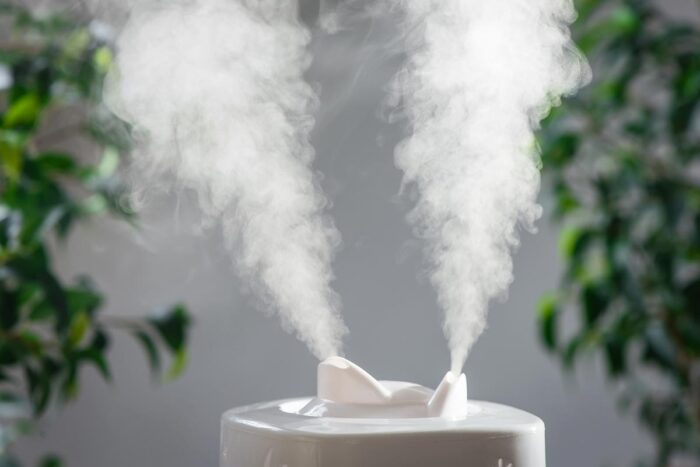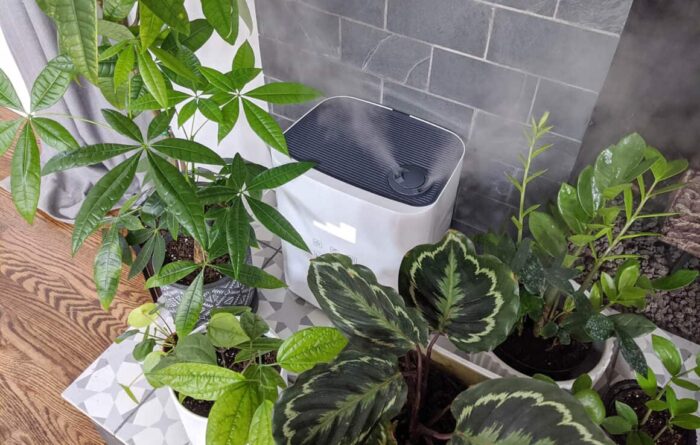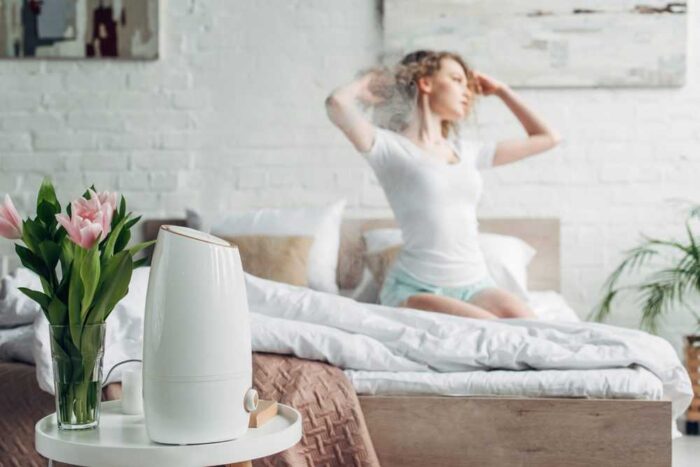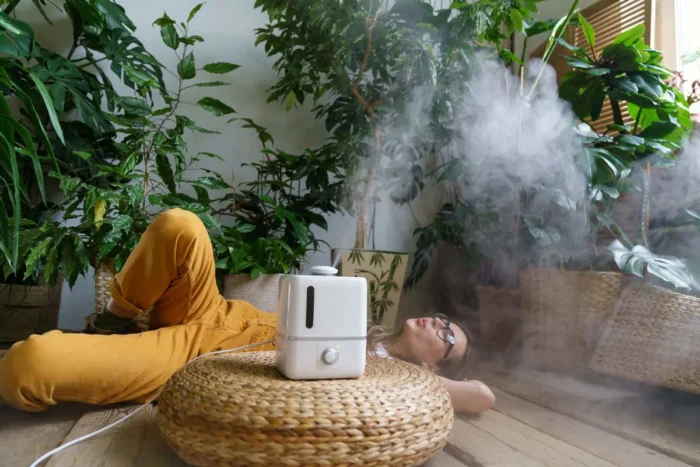
Maintaining a healthy home involves more than just cleanliness and good ventilation. Humidity, the amount of moisture in the air, plays a crucial role in creating a comfortable and healthy living environment.
Whether it’s the scorching summer or the bone-chilling winter, humidity control is essential. That’s where a humidifier comes into play. By adding moisture to the air, a humidifier helps combat the adverse effects of both low and high humidity levels.
In this blog post, we will explore the significance of humidity control, the benefits of using a humidifier, and valuable tips to create an ideal environment in your home.
Understanding the Role of a Humidifier in Maintaining Ideal Conditions
A humidifier is a device that increases the moisture content in the air, helping to regulate humidity levels in your home. It works by releasing water vapor into the atmosphere, thereby raising evaporation and creating a more comfortable environment.
They come in various types, such as evaporative, ultrasonic, impeller, and steam humidifiers, each with its own unique mechanism for adding moisture to the air. Understanding how these humidifiers function is crucial in selecting the right one for your specific needs.
For example, if you’re looking for a visually appealing option, you might consider a light-up humidifier that not only adds moisture but also adds a pleasant glow to your living space.

The Impact of Low Humidity on Respiratory Health and Skin
Low humidity can have detrimental effects on our health and well-being. In dry environments, the moisture in our respiratory system evaporates rapidly, leading to irritated nasal passages, dry throat, and increased susceptibility to respiratory infections.
Dry air also affects our skin, causing it to become dry, itchy, and prone to cracks. Furthermore, low evaporation can worsen asthma and allergy symptoms. By introducing a humidifier, you can restore moisture to the air, alleviating these issues and promoting respiratory health and hydrated skin.
Benefits of Using a Humidifier to Alleviate Dryness and Congestion
Using a humidifier offers numerous benefits beyond addressing dryness and congestion. By maintaining an optimal moisture level, you can reduce snoring, improve sleep quality, and even alleviate symptoms of colds and flu. The added moisture in the air helps to soothe and moisturize the respiratory system, allowing for easier breathing and congestion relief.
Additionally, a humidifier can prevent dry eyes, reduce the risk of static shocks, and preserve the integrity of wooden furniture and musical instruments.
Factors to Consider When Selecting the Right Humidifier for Your Home
Choosing the right humidifier for your home depends on several factors. First, consider the size of the area you want to humidify. Different devices have varying coverage capacities, so it’s essential to match the output of the device to the size of your space.
Second, decide on the type that suits your needs best. Each type has its advantages and considerations, such as noise level, energy efficiency, and maintenance requirements. Lastly, consider additional features like adjustable humidity settings, automatic shut-off, and ease of cleaning.

Recommended Humidity Levels for Different Seasons and Regions
The ideal humidity level varies depending on the season and geographic location. Generally, a range of 30% to 50% humidity is considered comfortable for most homes. During the winter months, when heating systems reduce moisture levels, it’s recommended to maintain a humidity level of around 40% to prevent dryness.
In hot and humid regions, such as coastal areas, keeping the evaporation level lower, around 30% to 45%, helps minimize the growth of mold and mildew. It’s important to monitor and adjust the humidity levels accordingly to achieve optimal comfort.
How to Monitor and Adjust Humidity Levels Effectively
Monitoring and adjusting humidity levels effectively is crucial to maintain a healthy indoor environment. A hygrometer, a device that measures humidity, is a valuable tool to track the moisture content in your home. Place it in a central location away from direct sunlight and heat sources for accurate readings.
If the humidity level is too low, consider using it. On the other hand, if the moisture is too high, using a dehumidifier or increasing ventilation can help regulate the moisture. Regularly monitoring and adjusting evaporation levels will ensure a comfortable and balanced environment.
Tips for Optimal Placement of a Humidifier in Your Home
To maximize the benefits, proper placement is essential. Place it on a flat, elevated surface, away from furniture and walls to prevent moisture damage. Ensure there’s enough clearance around the device for adequate air circulation.
Placing the humidifier near a heat source can cause excessive moisture, while placing it too far away may result in inefficient humidification. Additionally, consider using a device in the rooms where you spend the most time, such as the bedroom or living room, to enjoy the benefits throughout the day.

Maintenance and Cleaning Guidelines for a Well-functioning Humidifier
Regular maintenance and cleaning are necessary to ensure the proper functioning of your humidifier and prevent the growth of mold and bacteria. Follow the manufacturer’s instructions for cleaning and disinfecting it regularly. Empty and refill the water tank daily, using distilled or demineralized water to minimize mineral buildup.
Replace filters as recommended, and inspect the device for any signs of damage. By keeping it clean and well-maintained, you can enjoy its benefits without compromising your health.
Potential Risks and Precautions Associated With Improper Humidity Control
While a humidifier can greatly enhance your indoor environment, improper use can lead to certain risks. Over-humidification can promote the growth of mold, bacteria, and dust mites, triggering allergies and respiratory issues.
Excessive humidity can also cause condensation on windows and walls, leading to mold growth and structural damage. To prevent these risks, regularly monitor humidity levels, clean and maintain them, and ensure proper ventilation. By following these precautions, you can enjoy the benefits of a humidifier while maintaining a healthy and comfortable home.

Embrace the Benefits of a Humidifier for a Comfortable Home
Humidity control is a vital aspect of maintaining a healthy and comfortable home. It can alleviate the adverse effects of low humidity, such as respiratory discomfort and dry skin, while also providing numerous other benefits.
By understanding the role of a humidifier, considering the right factors when selecting one, and monitoring and adjusting humidity levels effectively, you can create an ideal environment in your home.
Remember to follow maintenance and cleaning guidelines and take precautions to avoid potential risks. Embrace the benefits of a humidifier, and enjoy a comfortable, well-balanced living space for you and your loved ones.








